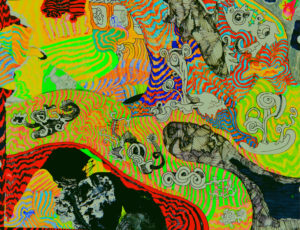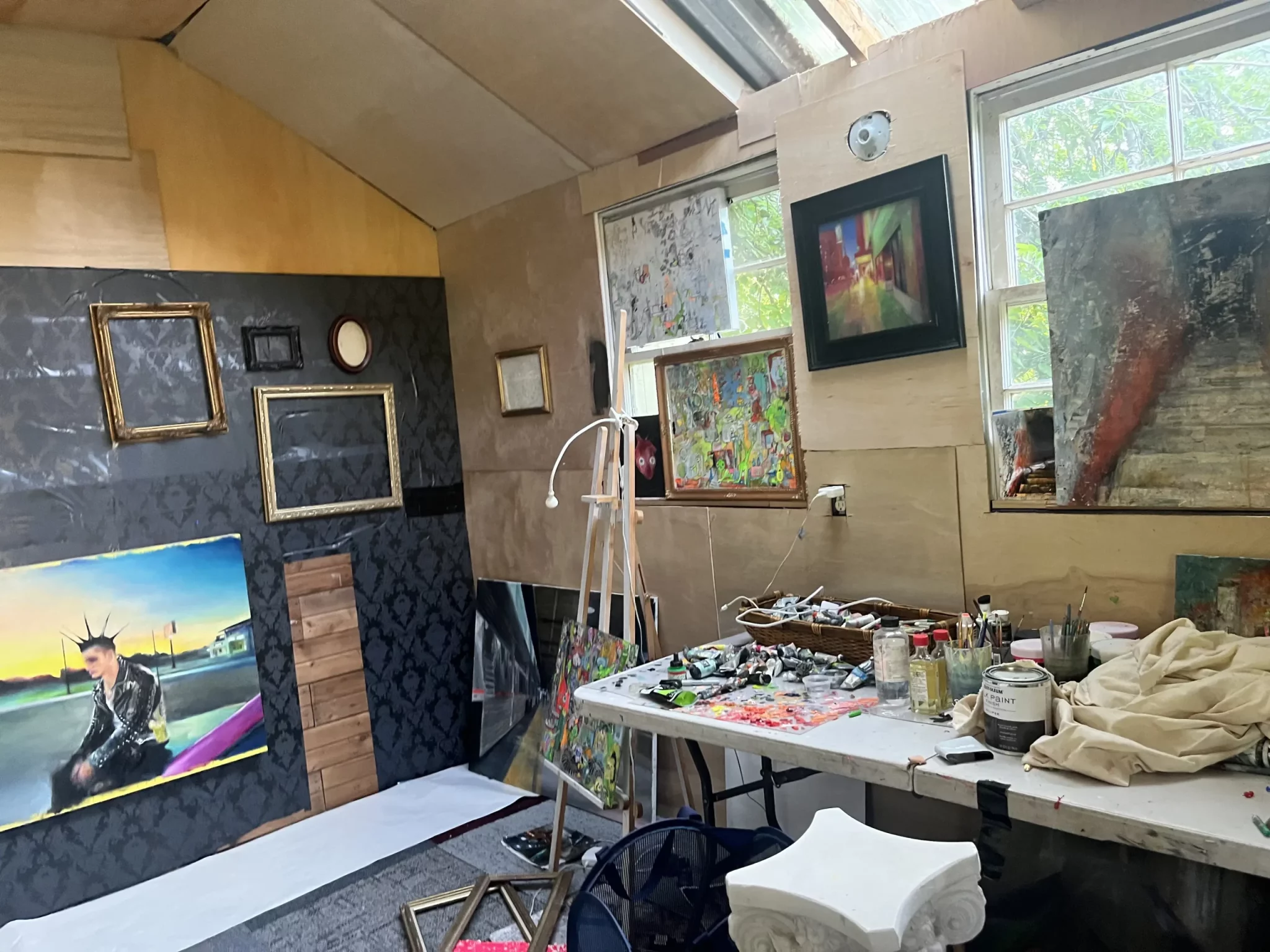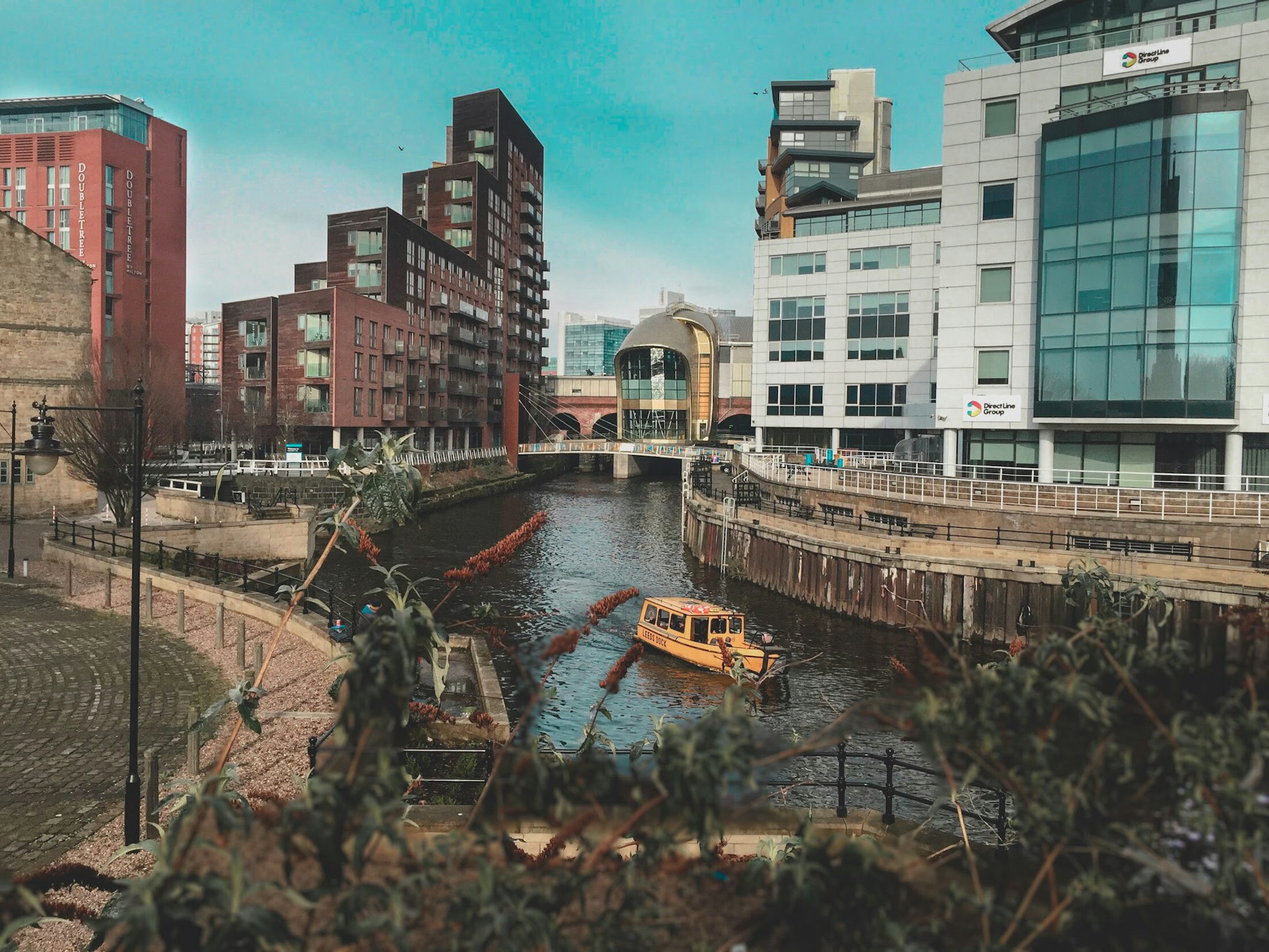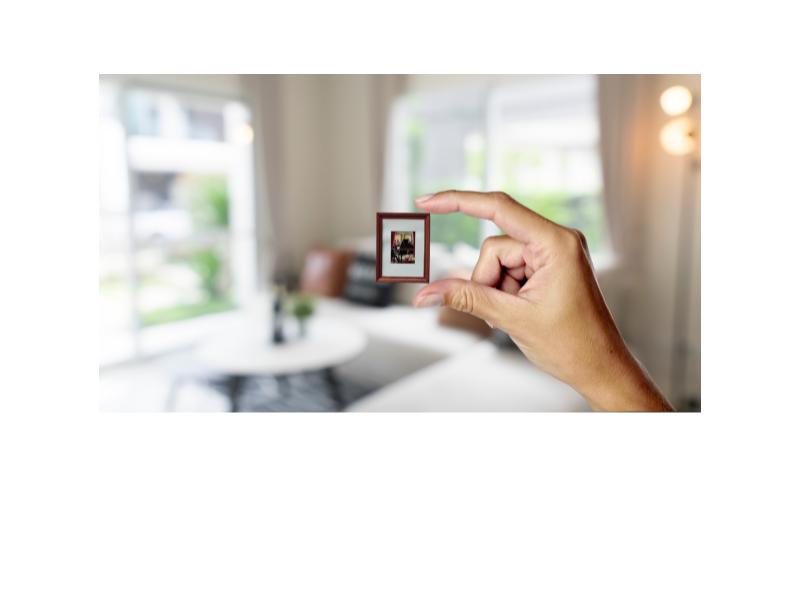By Zoë Goetzmann
Interview with Lorelei Linklater – Journey and Creativity
This week on Cosimo Studio Tours, we are bringing you a special interview with artist Lorelei Linklater. The episode was recorded and filmed at and with the help of the Motion Media Arts Centre (@austinschoolofilm) in Austin, Texas.
You can listen to the full interview here.
Lorelei Linklater is a fine and digital artist. Her work focuses on realism. Lorelei’s practice stems from traditional painting, exploring cartoon-inspired drawings and illustrations, ‘GIFs’, textured collage, feminist influence, and experimental found sculpture. She received a B.F.A. from California College of the Arts and is working towards her M.F.A. at ArtCenter College of Design. Her solo exhibitions include ‘Chaotic Duality’ at the Motion Media Arts Center, ‘I Can Feel Her Staring’ at ALT Gallery, Eikasia at College Avenue Galleries in Oakland, California. In 2021, Lorelei exhibited her work in a group show, ‘Museum of the Future Present’ in Austin, Texas.
In this interview, we speak about Lorelei’s fine and digital artistic practices, how she expresses herself through her artwork, identity, her role as a female artist as well as the need for transparency in the art world.

Zoe: So we’re here in Austin, Texas, at the Cosimo studio tours with artist Lorelei Linklater.
We’re interviewing her from the Motion Media Center. Thank you, Lorelei, for being here. This setup is different from what we usually do, but it’s fun!
Let’s dive into the first question. As an artist, everyone has their own journey and story. Can you share your artist story with us? How did you become an artist?
Lorelei: Well, I’ve been involved in art for as long as I can remember. I started as a child, and at some point, art became a way for me to capture things that couldn’t be expressed in words.
It became a therapeutic outlet for me.
Zoe: So, when did you realize that art was something you wanted to pursue more seriously? Was there a turning point in your life?
Lorelei: I think around the age of 13, I felt a strong connection to art. It was something I wanted to do, something I had confidence in, and something I felt was my calling and career path.
Zoe: Do you remember the first piece of art you ever created when you were younger? What was your main focus or subject?
Lorelei: There were many different pieces I created, and I’m not very good at describing them. Describing my work is perhaps a weakness of mine because I have always been better at communicating through visual means.
When I started painting as a child, I focused on a lot of animals, both real and imaginary. I experimented with collage and large words.
I wish I could show you some of my old pieces because I feel a bit shy talking about them.

Zoe: That’s actually helpful because it leads into your current art practice. Can you tell us more about your practice as both a fine artist and a digital artist? What mediums and themes do you explore?
Lorelei: I primarily identify as a painter, illustrator, and draftsman. The themes I explore involve coming to terms with death, the mystery of what happens after death, my own personal mythology, alternate worlds within worlds, and the concept of the multiverse theory.
I’m intrigued by the strangeness of reality and the interactions between beings. Additionally, aesthetics play a significant role for me. Painting has always been a visceral experience, and layering paint is an integral part of my process.
I often build up layers, but sometimes it diverges from my original intention. I end up sanding down a layer, adding another, erasing or getting frustrated.
For every successful painting, there are many more that I worked on for hours, days, or even years, but they never reached fruition because I overworked them.
It’s a process of trial and error, and sometimes I find myself oversaturating with grays or making too many changes that deviate from my initial vision.
Zoe: Okay, let’s focus on your realism paintings. What do you enjoy the most about creating realistic landscapes and urban landscapes? Can you share your process for those?
Lorelei: I see my realism paintings as a more calculated part of my art. They come from a different part of my brain, a more planned and geometric approach.
In a way, there is a right and wrong answer as I aim to achieve a specific outcome and mimic a certain reality, often based on photographs.
It’s a technique I have developed and honed over time through practice. I am drawn to buildings because I enjoy building up textures.
For these paintings, I usually work from photographs and strive to get everything right on the first try.
Zoe: Where do you find inspiration for your realism paintings? Are they based on your travels? I never asked about the actual locations.
Lorelei: They are inspired by various locations. Most of them are based on photos I have taken. I take a lot of photos, like anyone in the modern world with smartphones.
But I choose specific ones that have qualities fitting into the themes of my series. I take them everywhere I go, whether it’s during my travels in Europe, different places in Texas, California (especially LA and the Bay Area), or other locations. So yes, they are based on photos.
The process usually involves me looking at the photo, rendering it, and then painting it. The painting itself takes on a life of its own.
Zoe: Moving on to your abstract pieces, which are both paintings and digital works, including animation.
Lorelei: The process for my abstract pieces comes from a completely different place. It’s more of a right-brain approach.
When it comes to my digital work, I don’t think at all. I just let myself do it. I enter a state of zoning out, and something takes over. It’s almost like being possessed.
Part of me loves it, but part of me also hates it. It feels like I’m in a trance when I create digital art.

Zoe: Is that because the abstract nature of it allows you to let go and express yourself freely?
Lorelei: Yes, that’s part of it. With my digital work, I go into a sort of trance. As for my abstract paintings, it’s a different experience.
For them, the process itself is more important than the final result. I enjoy mixing different mediums that wouldn’t typically go together, such as inks, dyes, wall paint, and drippy acrylic paints.
I like observing the chemical reactions and how the paintings come together. Sometimes I lose myself in the process, and it becomes about the transient nature of what it looks like, even if it’s only seen by me.
Zoe: It’s interesting to hear about your creative flow. Other artists have described painting as a mood. For you, it seems like digital art is what triggers that manic trance-like state.
Lorelei: Yes, it’s a sort of manic trance, a different experience altogether.
Zoe: What do you love most about being an artist? If you could pick one thing, or it can be many things?
Lorelei: There are many things I love about being an artist. One thing that comes to mind is having something that is entirely my own in a world of uncertain outcomes.
In many aspects of life, we don’t have control and are dependent on various factors. But as an artist, I have complete control over what I create.
I can build my own world and bring something into existence that has never existed before. Some people say that everything has already been done, even with the advancements of AI.
While AI can produce things that may resemble art, there’s something unique and irreplaceable about human artistry. I believe there are aspects of art that AI will never be able to replicate. I hope that makes sense.
Zoe: I really appreciate hearing different artists’ perspectives on this question. It’s interesting to hear your thoughtful response.
Lorelei: Thank you. I’ve actually thought about this quite a bit, as I’m writing my thesis on it.

Zoe: Does that perspective align with your digital art, especially when you delve into abstract themes? Your body of work is extensive, so it’s challenging to narrow it down. But it seems to relate to the concept of existence and the infinite nature of digital art.
Lorelei: Yes, that’s a great observation. In my digital art, I do explore abstract themes and the infinite possibilities of the digital medium.
It allows me to explore and understand the concept of existence in unique ways.
Zoe: Finally, do you have any major artistic influences? I know you have many, but feel free to mention a few.
Lorelei: I have numerous artistic influences. One of my favorites is the medieval painter Hieronymus Bosch.
His work was ahead of its time, surreal, and intricately detailed, creating worlds within worlds.
While not all of my paintings are directly influenced by him, I appreciate capturing the complexity and abundance of detail in certain types of my artwork.
Images from Lorelei’s website














